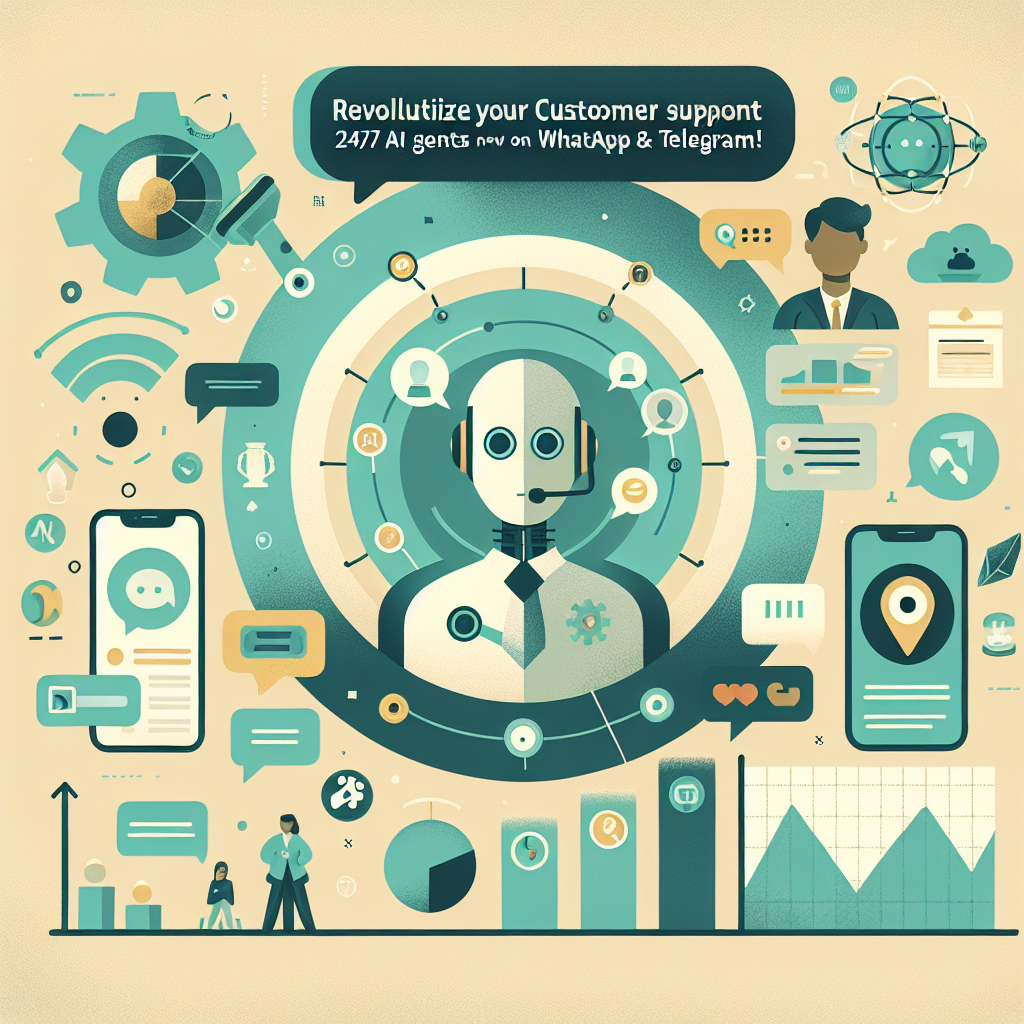“`html
Revolutionize Your Customer Support: 24/7 AI Agents Now on WhatsApp & Telegram!
Introduction: Welcome to the Future of Customer Support
In today’s fast-paced digital world, customers demand instant responses to their queries, regardless of the time of day. Gone are the days of traditional 9-to-5 support hours. With the advent of powerful AI customer support technology, businesses can now offer seamless, round-the-clock assistance via platforms where customers already spend their time — WhatsApp and Telegram.
This article explores how businesses can leverage 24/7 AI agents on WhatsApp and Telegram to enhance customer satisfaction, improve efficiency, and drive sales. Dive into the transformative impact of AI-powered chatbots and discover why embracing this innovation is crucial for staying ahead in today’s competitive landscape.
The Role of AI in Modern Customer Support
Artificial Intelligence (AI) has revolutionized many industries, and customer support is no exception. AI customer support solutions utilize machine learning and natural language processing to provide intelligent, automated responses that mimic human interactions. This drastically reduces response times and ensures customers receive accurate answers to their queries at any hour.
- Faster response times: Automated chatbots provide near-instant replies.
- Personalized support: AI can analyze customer data to offer tailored solutions.
- Scalability: Handle thousands of simultaneous conversations without compromising quality.
Both WhatsApp and Telegram have emerged as popular channels for AI customer support due to their widespread adoption and user-friendly interfaces. But why are these platforms so effective for businesses looking to implement AI-driven customer support solutions?
Why WhatsApp and Telegram? The Perfect Platforms for AI Chatbots
WhatsApp boasts over 2 billion users worldwide, making it the most widely used messaging app. Telegram, on the other hand, has gained significant popularity for its emphasis on privacy and seamless integrations. Both platforms are ideal for deploying AI customer support solutions because they are already ingrained in customers’ daily lives.
- Wide user adoption: Businesses can reach a vast audience.
- Ease of integration: AI chatbots can be easily integrated with existing systems.
- Rich media support: WhatsApp and Telegram allow for multimedia content such as images, videos, and documents.
By deploying an AI customer support agent on WhatsApp and Telegram, businesses can offer instant, accessible assistance without requiring customers to download additional apps or navigate complex interfaces. This streamlines the support process and significantly improves customer satisfaction.
Key Benefits of 24/7 AI Customer Support Agents
1. Availability Round-the-Clock
One of the key advantages of AI customer support is its 24/7 availability. Whether it’s 3 a.m. or 3 p.m., AI chatbots on WhatsApp can provide instant answers to questions, resolve minor issues, and even complete transactions.
2. Cost-Effective Solutions
Hiring human customer service agents to work around the clock can be costly. AI solutions are cost-effective alternatives that save businesses money while maintaining high-quality support. After the initial setup, AI chatbots require minimal ongoing costs compared to hiring and managing employees.
3. Improved Customer Experience
AI chatbots use natural language processing to understand the context of customer queries and provide personalized, accurate responses. This prevents frustration caused by generic or irrelevant answers and ensures customers leave every interaction feeling valued.
Implementing AI Chatbots on WhatsApp and Telegram: A Step-by-Step Guide
Step 1: Choose the Right AI Platform
Several AI platforms specialize in chatbot development for WhatsApp and Telegram. Popular options include Dialogflow, ChatGPT API, and Twilio. Evaluate features such as language support, scalability, and cost-effectiveness to select the one that best suits your business needs.
Step 2: Define Your Chatbot’s Objectives
Identify the key functions your chatbot will serve. Should it answer frequently asked questions, assist with sales inquiries, or provide technical support? Clear objectives will streamline your chatbot’s design and functionality.
Step 3: Design and Test the Chatbot
Develop conversational flows that address various customer scenarios. Use your selected platform to create the chatbot and test it extensively to ensure it delivers consistent and accurate responses.
Step 4: Integrate with WhatsApp and Telegram
Once the chatbot is ready, integrate it with WhatsApp and Telegram using APIs and developer tools. Ensure compatibility with both platforms so customers can engage effortlessly.
Step 5: Monitor and Optimize Performance
Regularly analyze your chatbot’s performance using metrics such as response time, resolution rates, and customer satisfaction scores. Use insights to make necessary improvements and continuously optimize support delivery.
Case Studies: Success Stories with AI Chatbots
Businesses worldwide are already experiencing the benefits of AI customer support agents on WhatsApp and Telegram. Here are two inspiring examples:
- A leading ecommerce retailer increased sales by 35% after deploying a WhatsApp chatbot to handle customer inquiries and recommend products.
- A telecommunications company reduced customer service wait times by 70% by implementing a Telegram chatbot that provides instant troubleshooting assistance.
These success stories highlight how AI integration can yield tangible benefits, from improved customer satisfaction to increased revenue.
Conclusion: Embrace the Future of Customer Support
The future of customer support is here, and businesses that embrace AI chatbots on WhatsApp and Telegram are well-positioned to succeed in an increasingly competitive environment. With benefits such as 24/7 availability, cost savings, and enhanced customer experience, AI-powered support agents are transforming how brands interact with their audience.
If your business isn’t already using AI customer support solutions, now is the time to begin. By driving innovation and meeting customer expectations, you’ll set the stage for long-term success in a constantly evolving digital landscape.
“`

